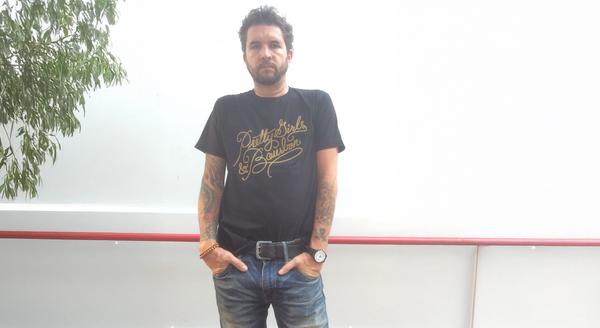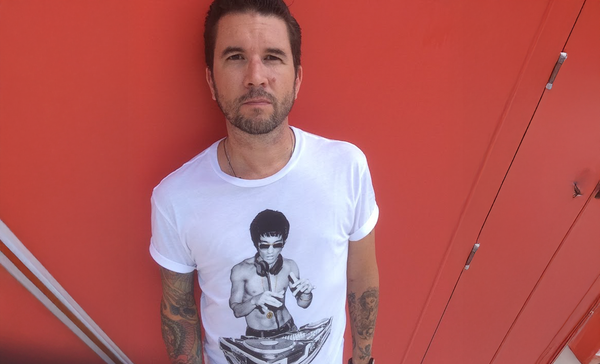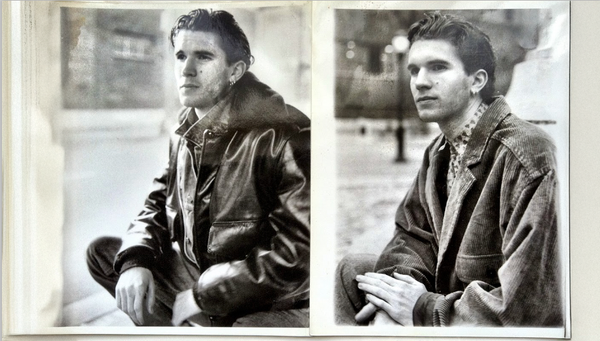We Need More Winstons: The Manager AI Can’t Replace

In the John Wick universe, the Manager is no ordinary functionary. They might welcome guests at The Continental, but they’re also the ones quietly pulling every string, not just in the hotel itself, but also affecting outcomes that occur outside the confines of the building itself. They know the players, the rules, and more importantly, when to break them. Their value isn’t in doing the fighting themselves, but in orchestrating, well, everything but the fight itself.
Every agency, in the Age of AI, needs its version of the Manager. Not someone who merely ticks boxes or enforces process, but someone who understands the system well enough to bend it toward the outcome that matters. Someone who serves the mission publicly, yet shapes it entirely from behind the scenes.
The Manager: The Human Interface Layer
Yesterday I had a rather revealing discussion with an agency head. We were discussing AI, agency workflows, and some of the darker realities of an “AI EVERYTHING” mindset, particularly around the challenges of moving towards a frictionless and potentially human-less workflow, powered by automation and algorithms.
It wasn’t until later in the evening that I began thinking about the discussion. We spoke passionately about platforms and productivity gains. We made sweeping predictions about job displacement, reskilling, and automation. We talked about the race to the bottom, about the need to protect craft in an industry that is pushing a frictionless AI-everything future. (Just read the recent whitepaper from WPP to get a sense of what that means. From where I sit, it’s not good.)
But there was nothing said about the role of the manager, the person who turns human and machine potential into performance.
It’s as if we think AI will manage itself.
AI in the workplace is not a self-driving car. It’s more like a Formula One team (easy analogy, but I think quite apt) - powerful, technical, and demanding. The tools are fast, the data is abundant, and the risk of crashing is real. What matters most is the human in the pit wall, calling the strategy, setting the pace, and knowing exactly when to push and when to hold back.
The Manager Sets the Tone, Not the Tempo
In the AI age, a great manager doesn’t just drive output. They create the conditions where output is multiplied.
They don’t set the tempo, that constant drumbeat of “go faster”, because AI will take care of speed. They set the tone, the mindset, culture, and priorities that determine whether the speed is taking you somewhere worth going.
That means creating an environment where AI is used with intent, not as a reflex. It’s easy for a team to fall into the habit of throwing every task at the nearest tool, hoping for magic. A great manager knows that mindless automation rarely makes work better. It just makes mistakes happen faster. Intentional use means knowing which tasks deserve the nuance of human thinking, and which ones can safely be handed to the machine.
It also means developing the skill to see the spaces in between, the blind spots where technology can’t yet reach, or where it delivers a result that looks right but feels wrong. These gaps are often invisible until someone with experience, judgment, and the patience to listen to their team notices them.
That’s where human leadership steps in, making the call, providing the context, or rewriting the rules so the system serves the work, not the other way around.
The Manager as Translator and Trailblazer
Teaching and training are equally critical. AI literacy can’t be a badge worn by a few enthusiasts; it has to become the shared language of the entire team. This isn’t about making everyone an expert in neural networks, but about giving them the confidence to ask better questions, the ability to judge AI’s output, and the habit of thinking, What could we do with this that we couldn’t do before?
A great manager also removes friction. In many organisations, the biggest killer of productivity isn’t the absence of tools, but the clutter of process. Endless approvals, duplicated effort, and unclear ownership drain energy. AI can help clear the bottlenecks, but only if the manager is willing to question why those bottlenecks exist in the first place — and redesign the workflow around what adds value.
Above all, they hold the vision. Speed without direction is just chaos. In a human–machine team, it’s the manager who keeps both forces pointed toward the same horizon, aligning the power of AI with the purpose of the work. They’re the translator between possibility and priority, ensuring the tech’s capabilities serve the strategy, not distract from it.
And in all of this, they play a dual role: Diplomat and General.
A great manager knows when to protect their team, to listen, to reassure, to shield them from noise. To reduce the friction of the everyday tasks. But they also know when to lead from the front — to show courage, to push into uncertainty, to demonstrate that change is not something to be endured, but something to be mastered.
If the Manager does this well, a dozen people can deliver the work of, well… exponentially more than a dozen.
The Manager You Might Already Have
Many organisations already have people who could do this. They’re just not in the roles you expect.
Often, they’re members of what I call the Epilogue Economy - leaders who’ve been through multiple cycles of technological and cultural change. They’ve seen hype cycles come and go. They’ve built teams in both abundance and austerity. They know what good looks like and what bad smells like because they’ve already lived it.
These leaders have two things AI can’t replicate:
- People sense — the ability to read a room, to sense when someone’s floundering before they say a word.
- Change wisdom — the understanding that transformation isn’t just adoption of new tools, it’s the slow, deliberate rewiring of habits and trust.
They may not be the first to master a new platform — but they know how to make sure others master it and keep using it when the novelty fades. In the AI age, that’s the difference between a tool that’s “rolled out” and a tool that’s embedded.
Why This Matters Now
As AI reshapes roles and workflows, we’ll need fewer managers who act like project schedulers, and more who act like force multipliers. The irony is, the best force multipliers might not be the shiny new hires, but the steady hands you already have - senior people looking for a new purpose, a new way to matter.
The opportunity is right in front of us. Pair AI’s capacity for speed with a manager’s capacity for trust, cohesion, and alignment. Work with them to reimagine their role. Equip them to lead humans and machines.
Watch what happens.
Back to Winston
In the John Wick Universe, Winston, the Manager of The Continental, never fires a shot in the main story. Yet every victory, every escape, every truce bears his fingerprints. He knows that control isn’t about doing everything yourself. It’s about knowing which levers to pull, which alliances to form, and when to bend the rules to serve the bigger picture.
That’s the kind of manager the AI age demands.
Someone who sits at the table and serves with grace, but also moves unseen through the corridors of influence, aligning people and machines toward the outcome that matters. Someone who can keep the speed without losing the soul.
We don’t need more operators in the age of AI.
We need more Winstons.

I’ll train your Winston, and the rest of your team, to lead and work in the AI age.
From managers who set the tone to teams who know how to pair human judgment with machine capability, I’ll help you build the human interface layer your organisation can’t afford to overlook.
Because AI will give you horsepower. But your Winstons will win you the race.



